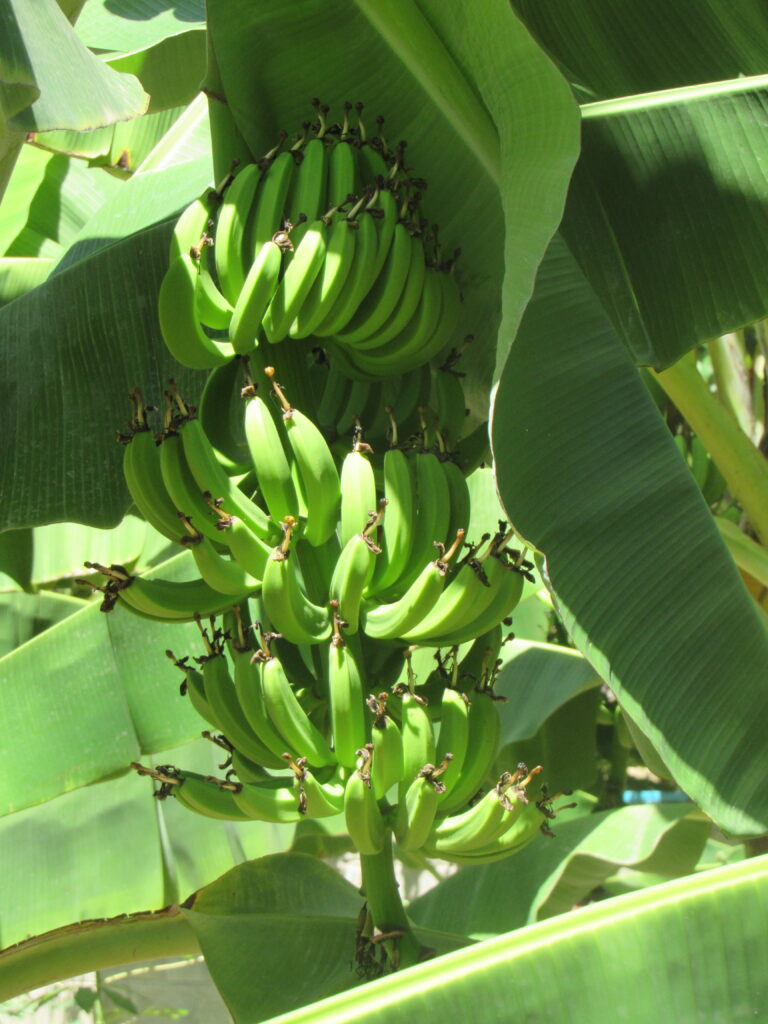In Haiti, the banana holds a central place in daily life, known not only for its flavor but also for its versatility in Haitian cuisine. Whether boiled and served with sauce, turned into crispy fritters, grated for papita, shredded into porridge, or dried in the sun to make flour, bananas are a staple in Haitian households. This fruit is used in countless dishes, throughout Haiti.
If you want to learn how bananas are grown and harvested in Haiti, here’s a guide on how to plant a banana tree and cultivate bunches of bananas.
How to Plant a Banana Tree for a Bountiful Harvest
Banana trees are most commonly cultivated in irrigated regions, often referred to as “watered soils.” However, they can also thrive in non-irrigated areas such as mountainous regions or more remote areas with limited access to irrigation. Here’s a step-by-step process to ensure a healthy banana crop:
1. Preparing the Land
- The first step in planting banana trees is preparing the land. This typically involves cleaning the area to remove weeds, although this step may not always be necessary if the soil is already ready for planting.
- Next, you will need to dig holes to plant the banana trees. The size and depth of the holes vary depending on the type of soil and the variety of banana being planted. A good foundation is key to ensuring healthy plant growth.
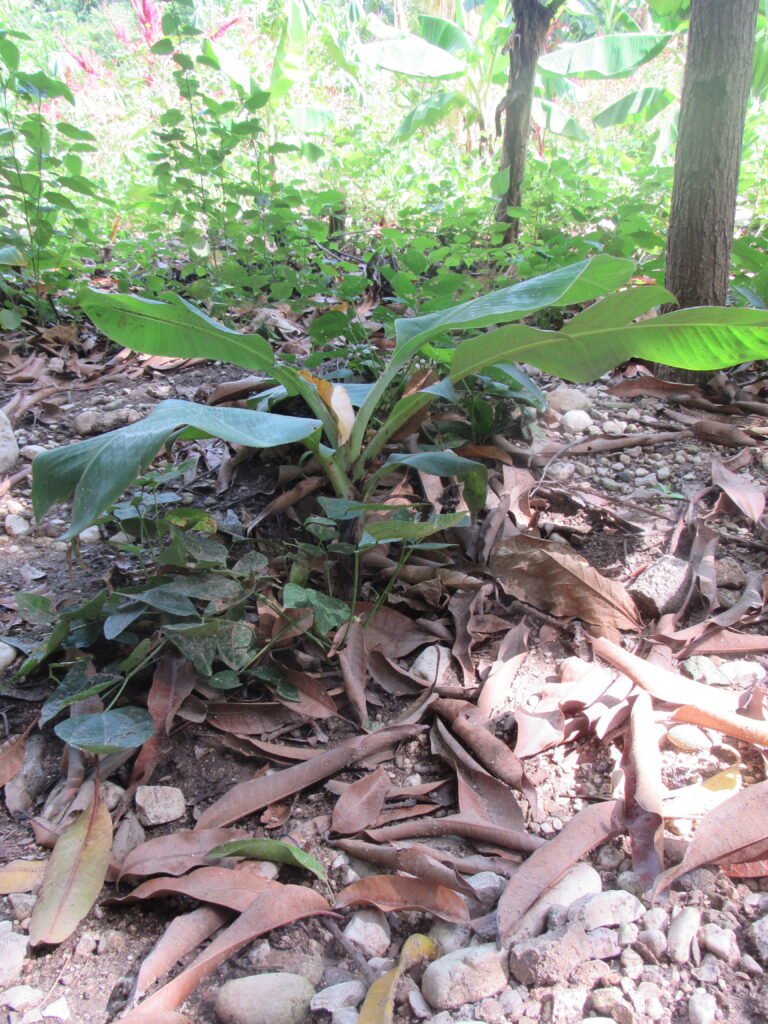
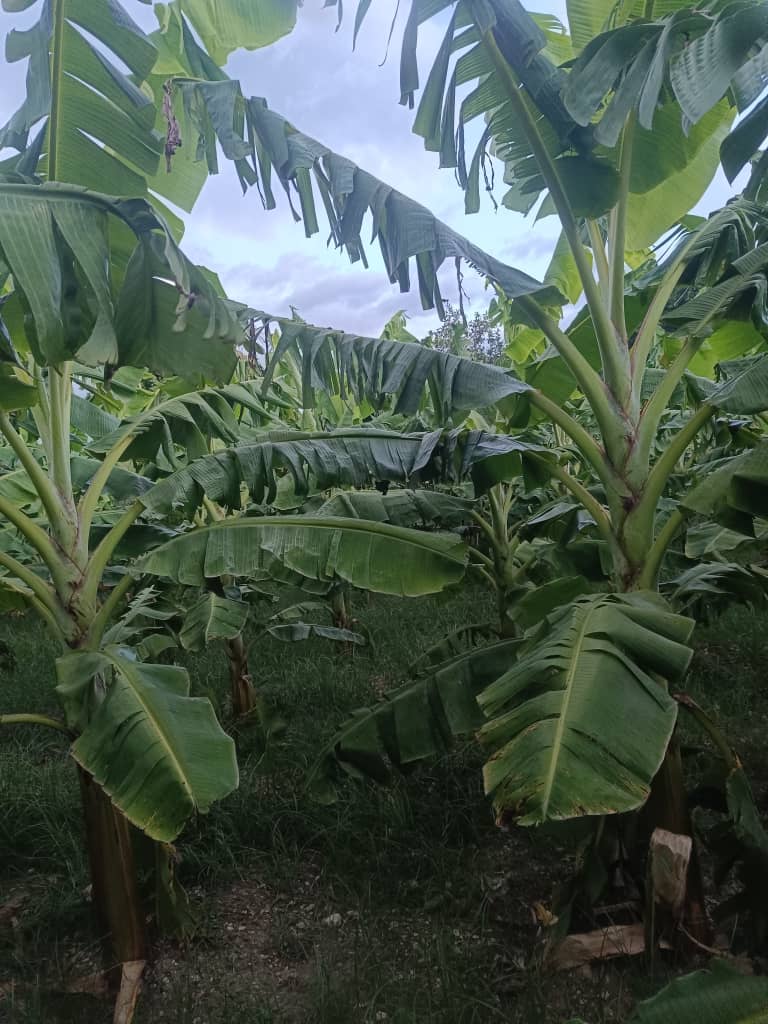

2. Obtaining Banana Plants
- Banana plants, or “pups,” can be obtained from other farmers or taken from existing banana gardens. Mature banana trees naturally produce pups at their base, which can be used to propagate new trees.
- The adult banana tree, often called the “mother,” produces not only bunches of bananas but also several shoots. A healthy banana tree can yield around 5 to 6 pups, allowing for continuous replanting and growth.
3. Planting and Maintenance
- The pups are then planted in the prepared holes. After planting, it’s important to monitor and care for the young banana trees, ensuring they receive sufficient water, even in non-irrigated areas.
- In the absence of rain, farmers irrigate the banana trees manually, using water from nearby canals or stored water sources. Throughout the tree’s growth, weeds are cleared from the soil to maintain a healthy environment. It’s also important to trim dried leaves from the trees to promote better air circulation and plant development.

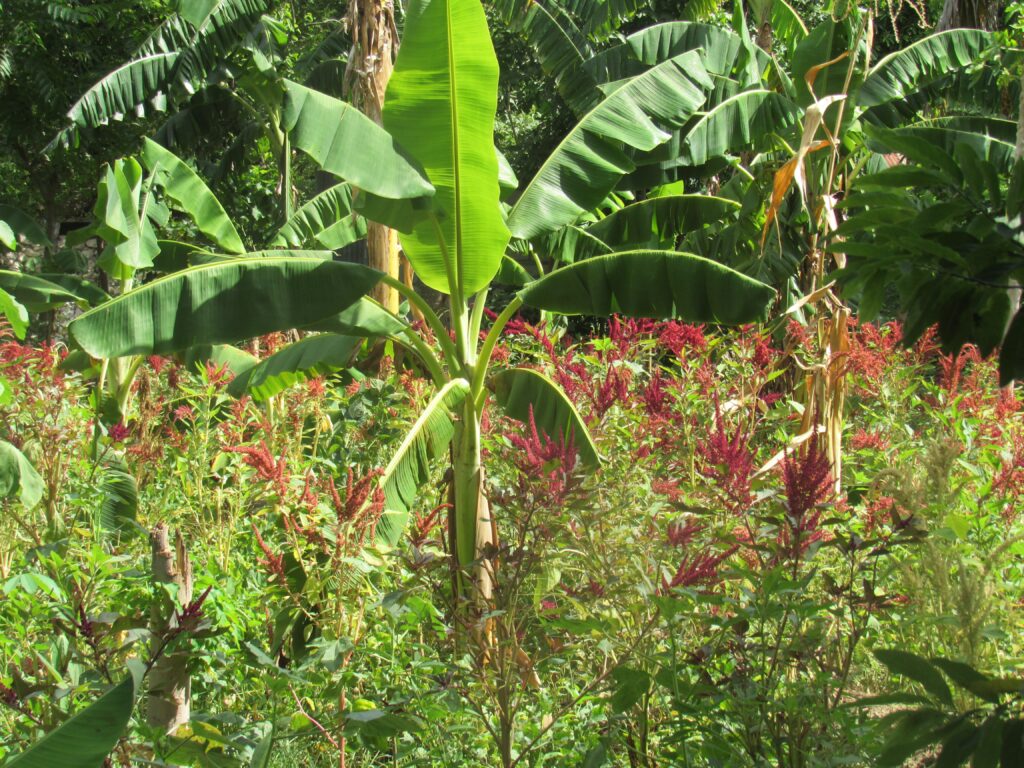
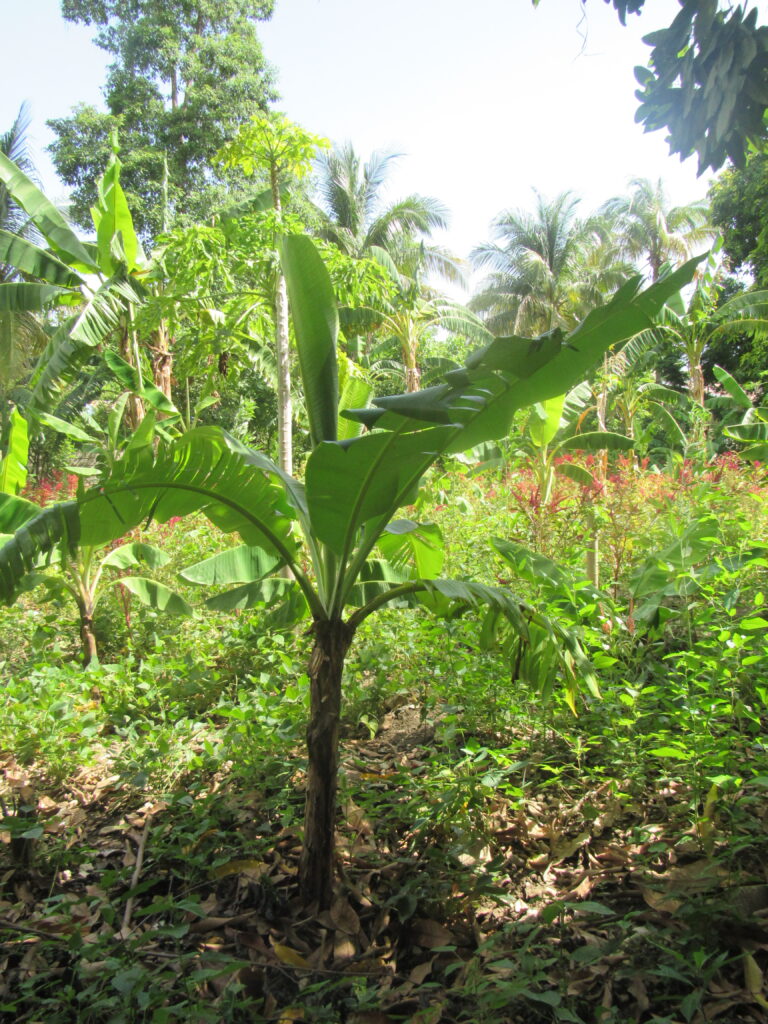
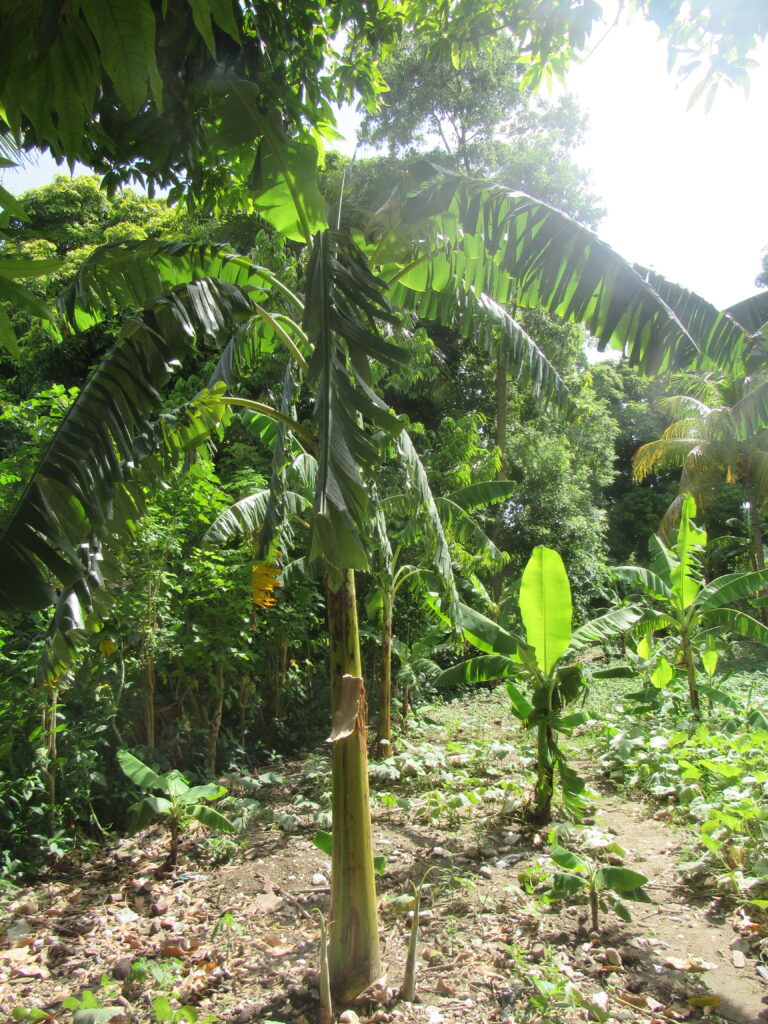
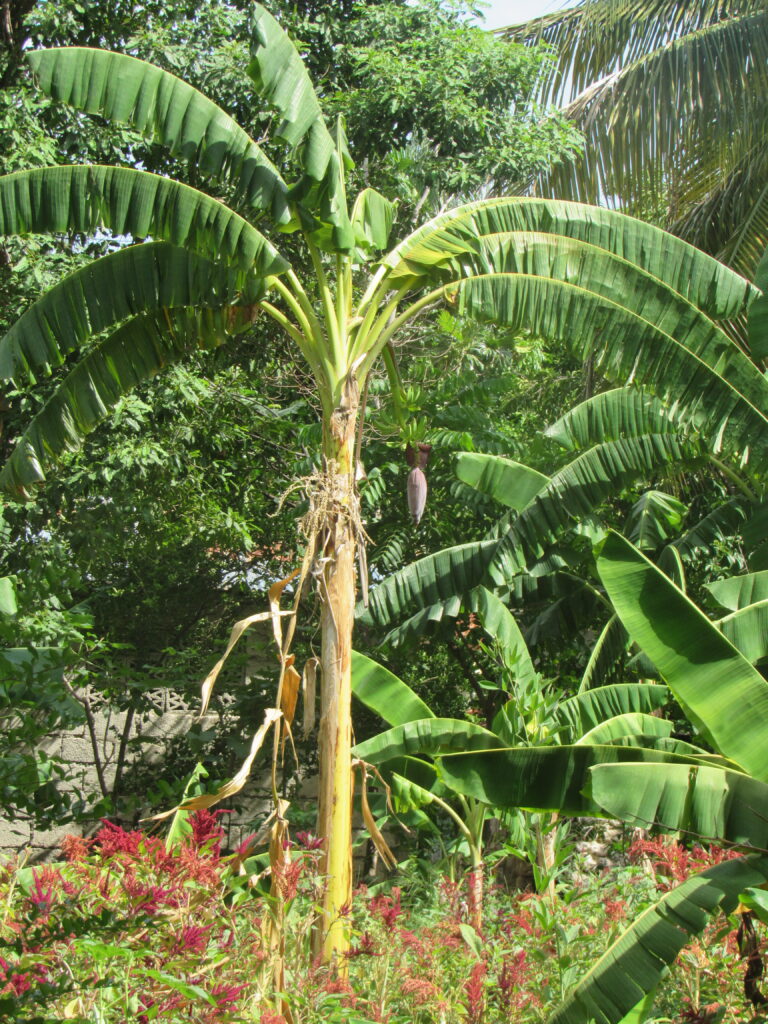
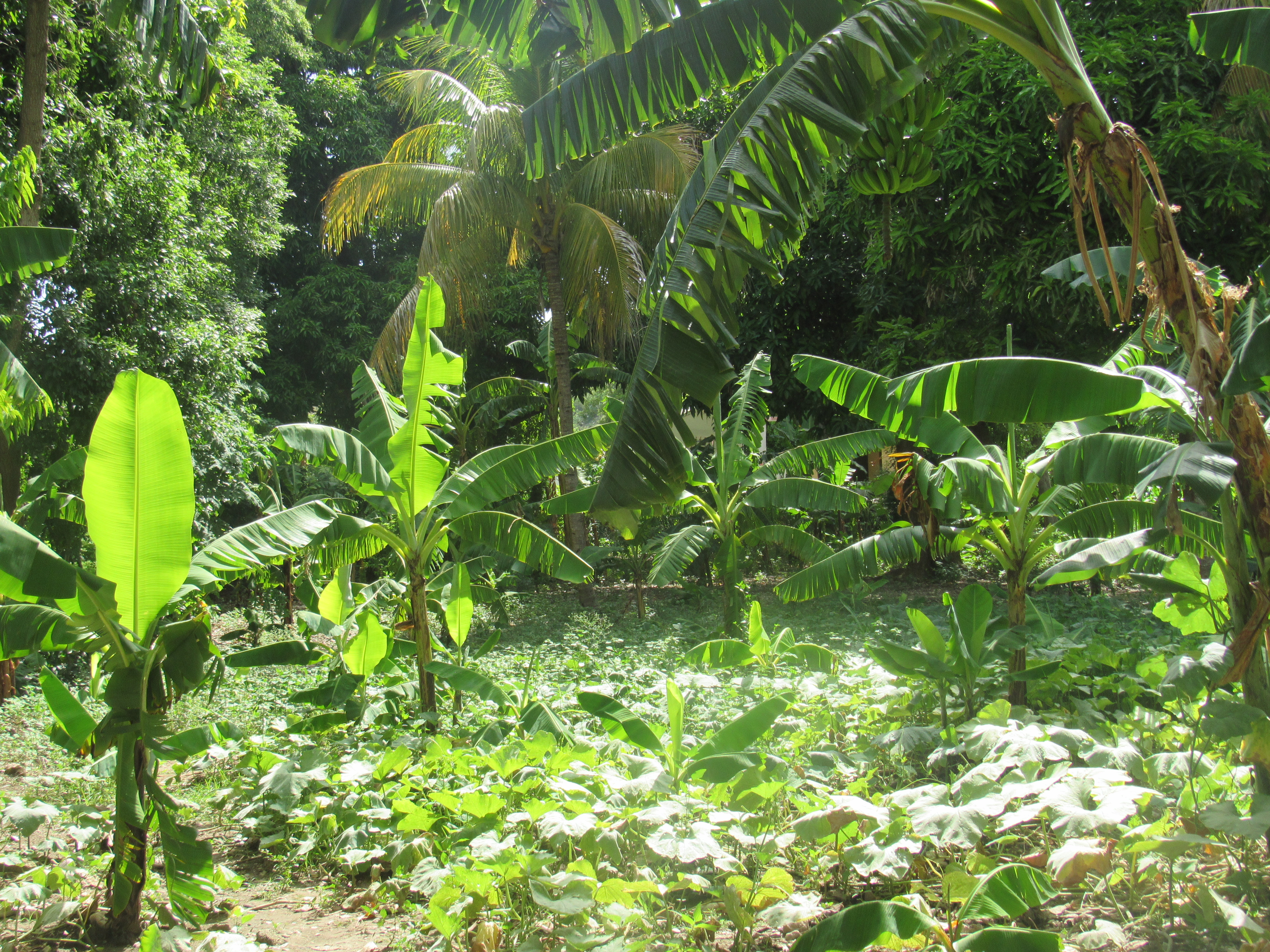
4. Growth and Harvest
- This care continues for about seven months. If the tree receives good attention, it will produce a sizable bunch of bananas. After seven months of regular upkeep, farmers continue to nurture the tree for an additional three to four months until the bananas fully mature.
- Once the bananas are ripe, they are harvested, either for home consumption or to be sold at the local market.
A Continuous Cycle of Growth
The cultivation of bananas in Haiti follows a sustainable cycle. The pups from the “mother” tree are replanted, creating new generations of banana trees. This cyclical process ensures that banana plantations are continually replenished, providing a reliable source of food and income for Haitian farmers.
By following these planting and care methods, Haitian farmers are able to maximize the potential of this valuable crop, ensuring a steady supply of bananas for both their families and the broader community. Bananas are more than just a fruit—they are a symbol of Haitian resilience, ingenuity, and the connection between the land and its people.


